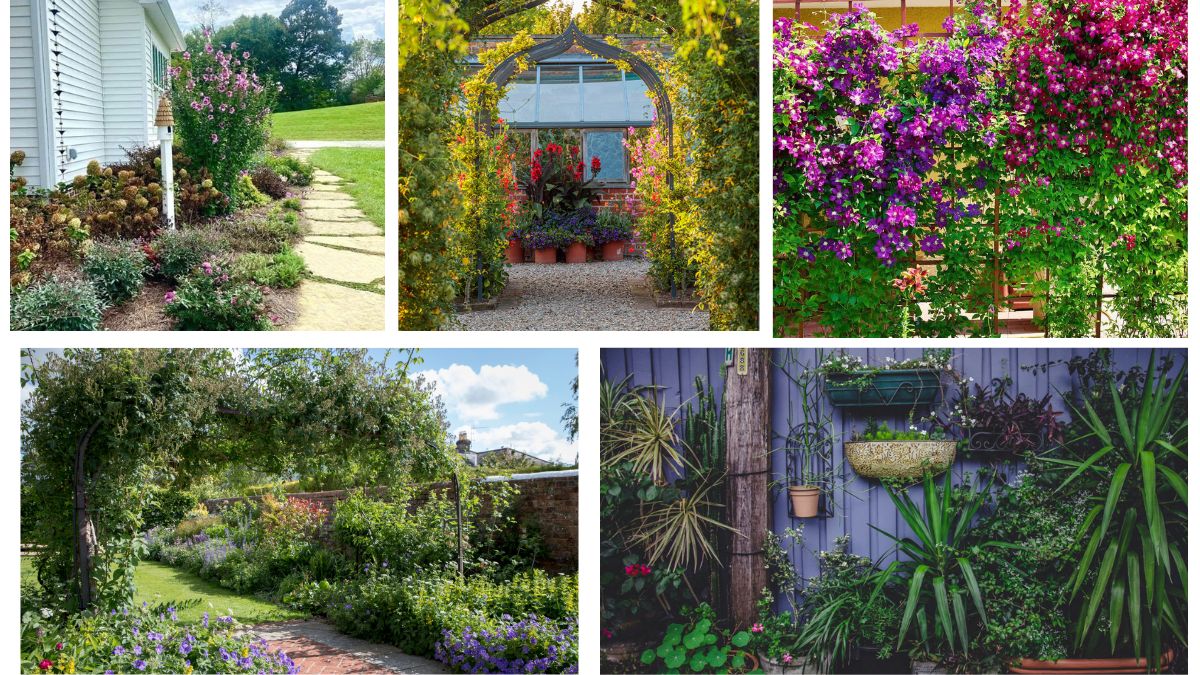When most people imagine a garden, they picture colorful flower beds, neatly trimmed lawns, or perhaps decorative pots arranged on the ground. But the true potential of a garden is revealed when you start thinking vertically. Adding vertical interest is one of the simplest and most effective ways to create dynamic, layered, and eye-catching garden spaces, especially if you’re working with a small or narrow plot.
If you’ve ever wondered “How can you add vertical interest to a garden?”, this comprehensive guide explores various ideas, structures, and plant choices to elevate your garden — quite literally.
Why Add Vertical Interest to a Garden?
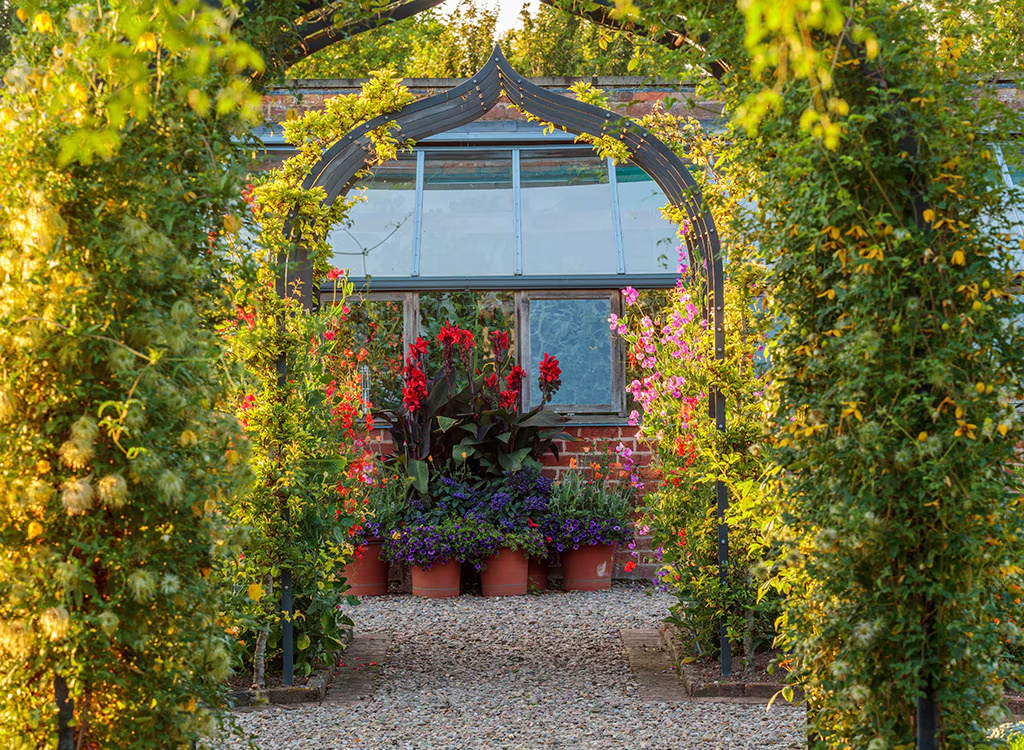
Vertical elements bring several benefits to a garden design:
- Maximize space in small gardens or patios.
- Create visual height and layers, drawing the eye upward.
- Introduce privacy and screening from neighboring views.
- Provide shade and shelter in outdoor seating areas.
- Support climbing and trailing plants.
- Add year-round structure with vertical hardscaping.
- Encourage wildlife and pollinators by increasing plant diversity.
Whether your garden is compact or sprawling, adding height and layers improves both aesthetics and functionality.
Best Ways to Add Vertical Interest to a Garden
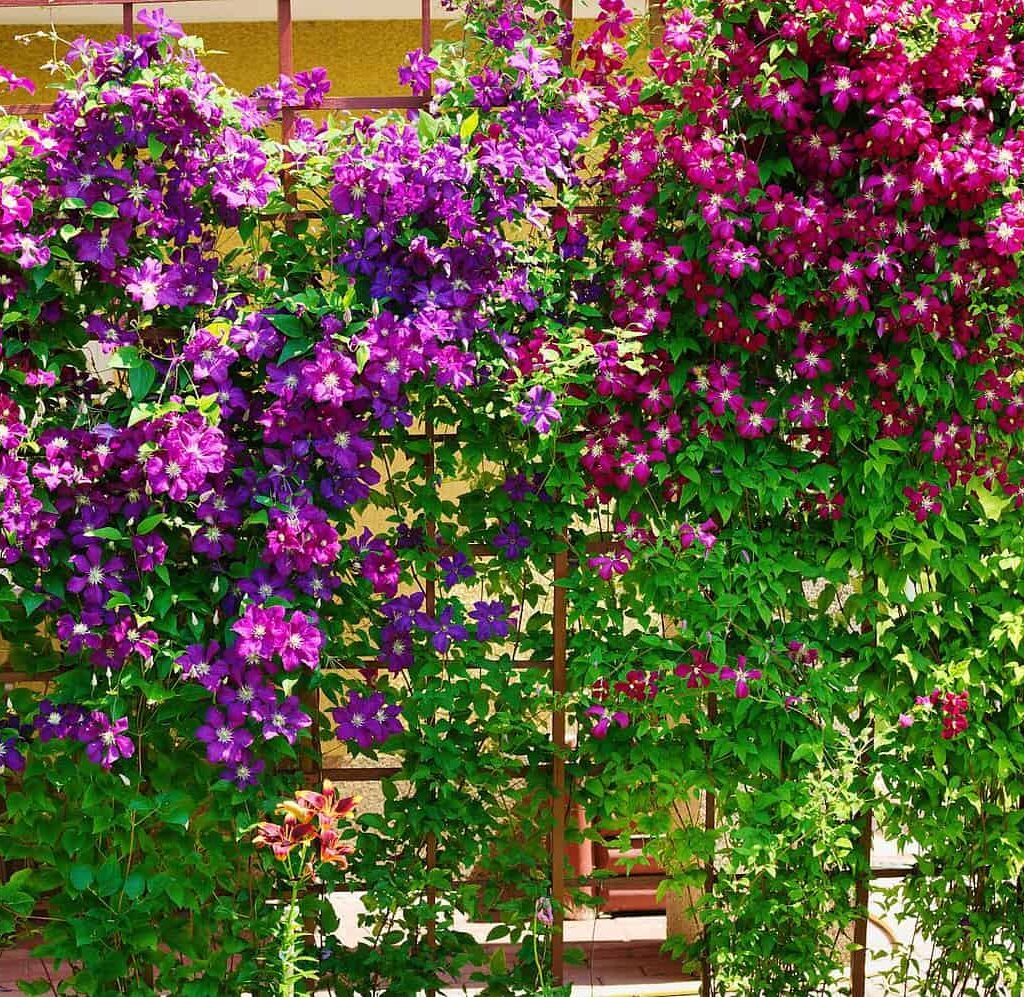
Let’s explore the most effective ways to introduce vertical features into your outdoor space:
Incorporate Climbing and Vining Plants
One of the most natural and charming ways to add vertical interest is by growing climbing plants. These can soften structures like walls and fences or climb up trellises and pergolas.
Popular Climbing Plants:
- Clematis: Gorgeous, star-shaped flowers in a range of colors.
- Climbing Roses: Romantic, fragrant blooms for walls or arches.
- Morning Glories: Fast-growing annual vines with bright flowers.
- Jasmine: Fragrant and elegant for vertical screens.
- Honeysuckle: Sweet-smelling flowers and attractive foliage.
Tip: Choose plants according to your garden’s sunlight exposure and available support structures.
Install Trellises and Lattice Panels
Trellises and lattice panels provide instant vertical interest while serving as supports for climbing plants. They also act as garden dividers or backdrops for flower beds.
Ideas:
- Attach a wooden trellis to a bare wall.
- Use freestanding lattice panels to partition seating areas.
- Train vines like ivy or bougainvillea on trellises for a lush, living wall.
Add Garden Arches and Pergolas
Arches and pergolas create height, structure, and focal points in any outdoor space. They can:
- Frame an entrance or pathway.
- Offer shaded spots for seating.
- Support climbing plants like roses, wisteria, or grapevines.
Design Tip: Choose sturdy, weather-resistant materials like metal or treated wood for durability.
Use Vertical Garden Planters and Living Walls
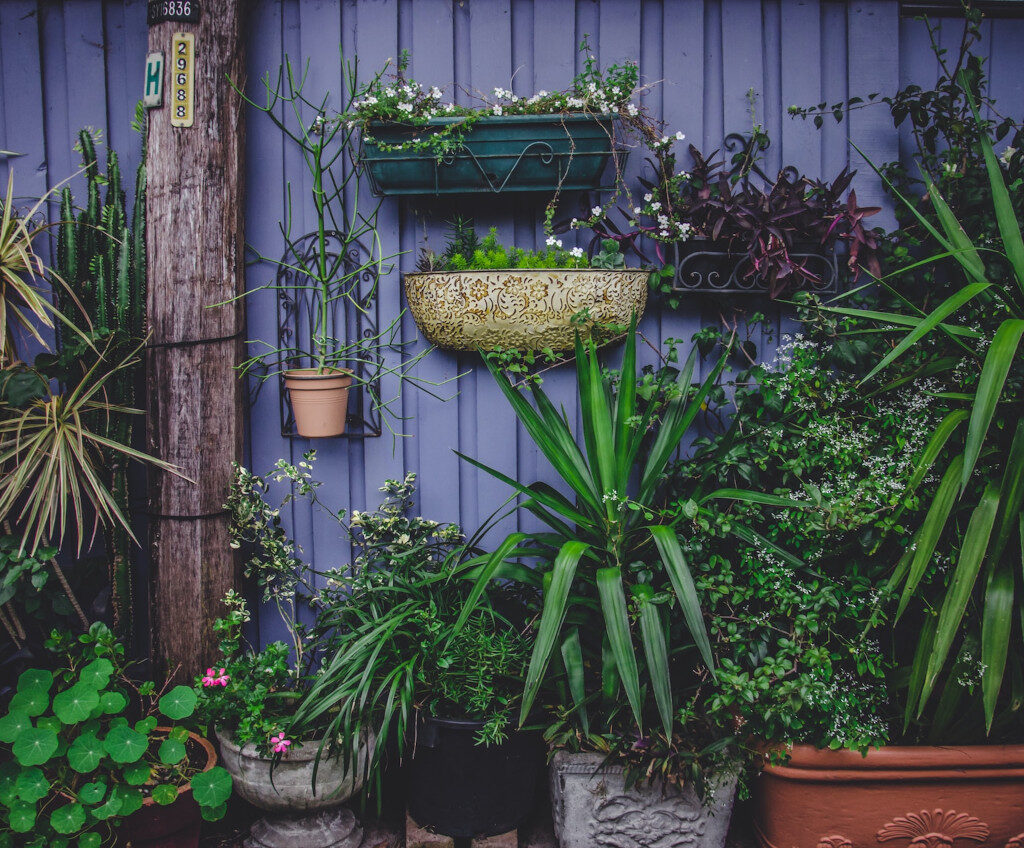
For small courtyards or balconies, vertical garden planters are a space-saving, modern solution. These can be wall-mounted frames, stacked planters, or tiered plant shelves.
Great Plant Choices for Vertical Planters:
- Herbs: Basil, thyme, mint.
- Ferns: For shady vertical spaces.
- Succulents: Low-maintenance and drought-tolerant.
- Ornamental trailing plants: Like string of pearls or spider plants.
Install Obelisks and Plant Supports
Obelisks and other vertical plant supports add instant height and sculptural appeal to garden beds and containers. They’re ideal for:
- Supporting flowering vines like sweet peas and morning glories.
- Growing compact climbers in pots.
- Creating focal points in the middle of borders.
Tip: Paint obelisks or structures to complement or contrast your plant palette.
Hang Baskets and Decorative Features
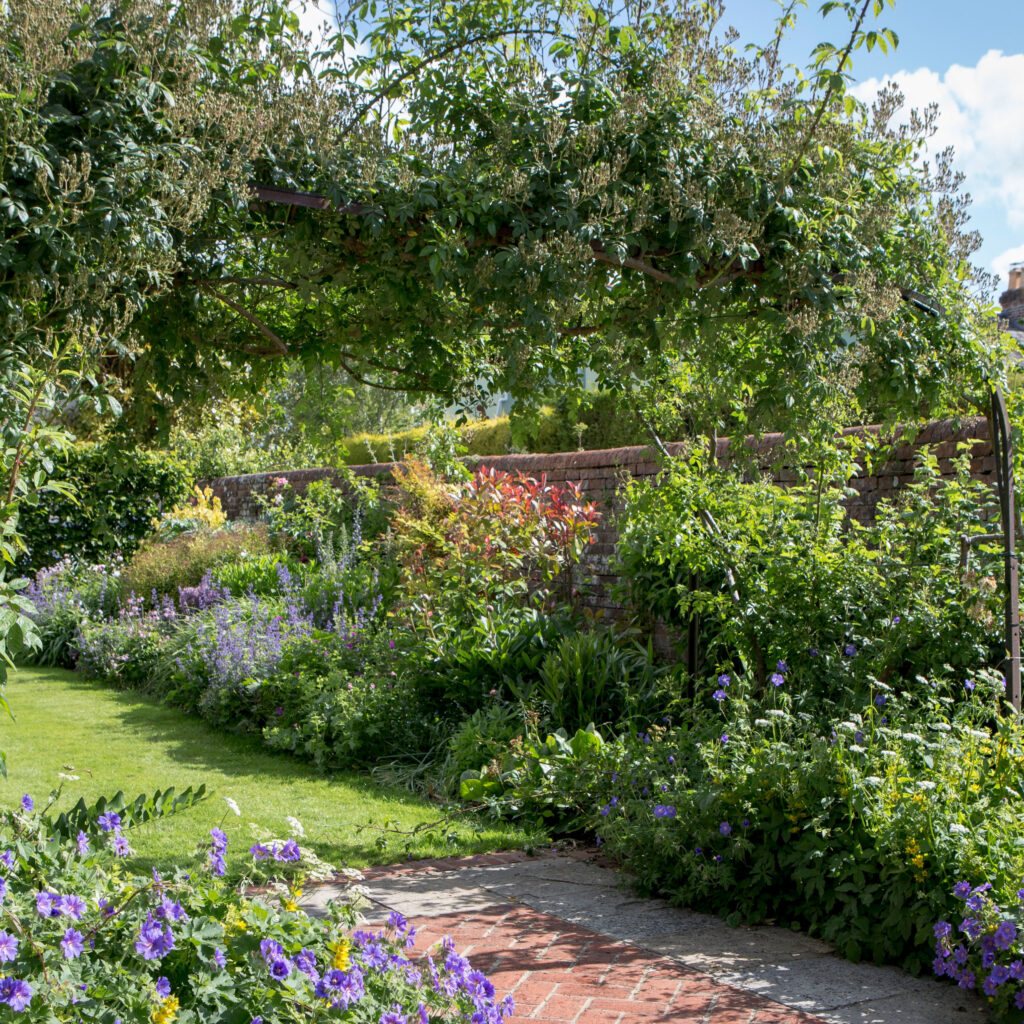
Hanging baskets elevate flowers and foliage to eye level and above, adding bursts of color in vertical layers.
Best Plants for Hanging Baskets:
- Petunias
- Fuchsias
- Trailing lobelia
- Verbena
- Bacopa
Additionally, hanging decorative elements like lanterns, wind chimes, or bird feeders from tree branches or pergolas adds charm and vertical interest.
Grow Tall and Upright Plants
Incorporating naturally tall or upright plants can create vertical layers without additional structures.
Great Tall Plants for Vertical Interest:
- Delphiniums: Towering spikes of blue, purple, or pink flowers.
- Foxgloves: Bell-shaped blooms on tall stems.
- Sunflowers: Classic, cheerful, and towering.
- Ornamental grasses: Like Miscanthus and Calamagrostis for texture and movement.
Tip: Plant tall varieties at the back of borders to create depth.
Build Raised Beds and Tiered Planting
Raised garden beds and tiered planters lift plants off the ground and naturally introduce different levels of planting.
Advantages:
- Easier access for maintenance.
- Improved soil control.
- Adds architectural lines and layers to your garden.
Consider combining raised beds with trellises or obelisks for even greater height.
Use Decorative Garden Structures
Beyond plants, you can add vertical interest with sculptural or architectural garden features.
Examples:
- Stone pillars or columns.
- Decorative screens.
- Wall art or murals.
- Birdhouses mounted on tall posts.
These features bring variety and serve as focal points year-round.
Practical Considerations for Vertical Garden Design
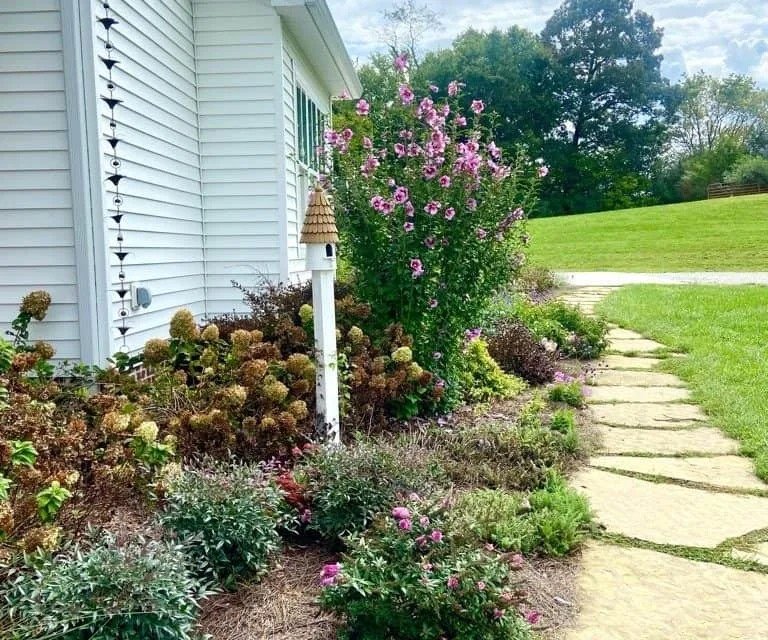
When adding vertical interest, keep these tips in mind:
- Sunlight: Taller plants and structures may cast shade. Plan placement accordingly to avoid shading sun-loving plants.
- Wind Exposure: Taller elements need to be secured against strong winds.
- Proportion and Balance: Mix heights thoughtfully to avoid a top-heavy or unbalanced look.
- Accessibility: Ensure vertical structures are accessible for watering, pruning, and harvesting if edible plants are involved.
- Durability: Choose weatherproof materials for supports and containers.
Sample Vertical Garden Ideas
Vertical Herb Garden
Attach multiple small pots or containers to a vertical frame on a sunny wall. Plant herbs like rosemary, parsley, mint, and chives for a functional and decorative display.
Living Wall Feature
Use a modular living wall system filled with succulents, ferns, or small flowering plants on a patio or balcony wall.
Pergola with Hanging Lanterns and Vines
Install a pergola over a seating area, grow flowering vines overhead, and hang decorative lanterns or wind chimes for atmosphere.
Conclusion
Adding vertical interest to a garden transforms flat, one-dimensional spaces into lush, layered, and captivating outdoor areas. Whether through climbing plants, architectural structures, hanging baskets, or tall ornamental plants, you can create visual drama, improve space efficiency, and extend your garden’s growing opportunities.
By thoughtfully incorporating vertical elements, you’ll enjoy a more engaging, immersive, and dynamic garden environment that offers beauty, structure, and practical benefits all year long.
